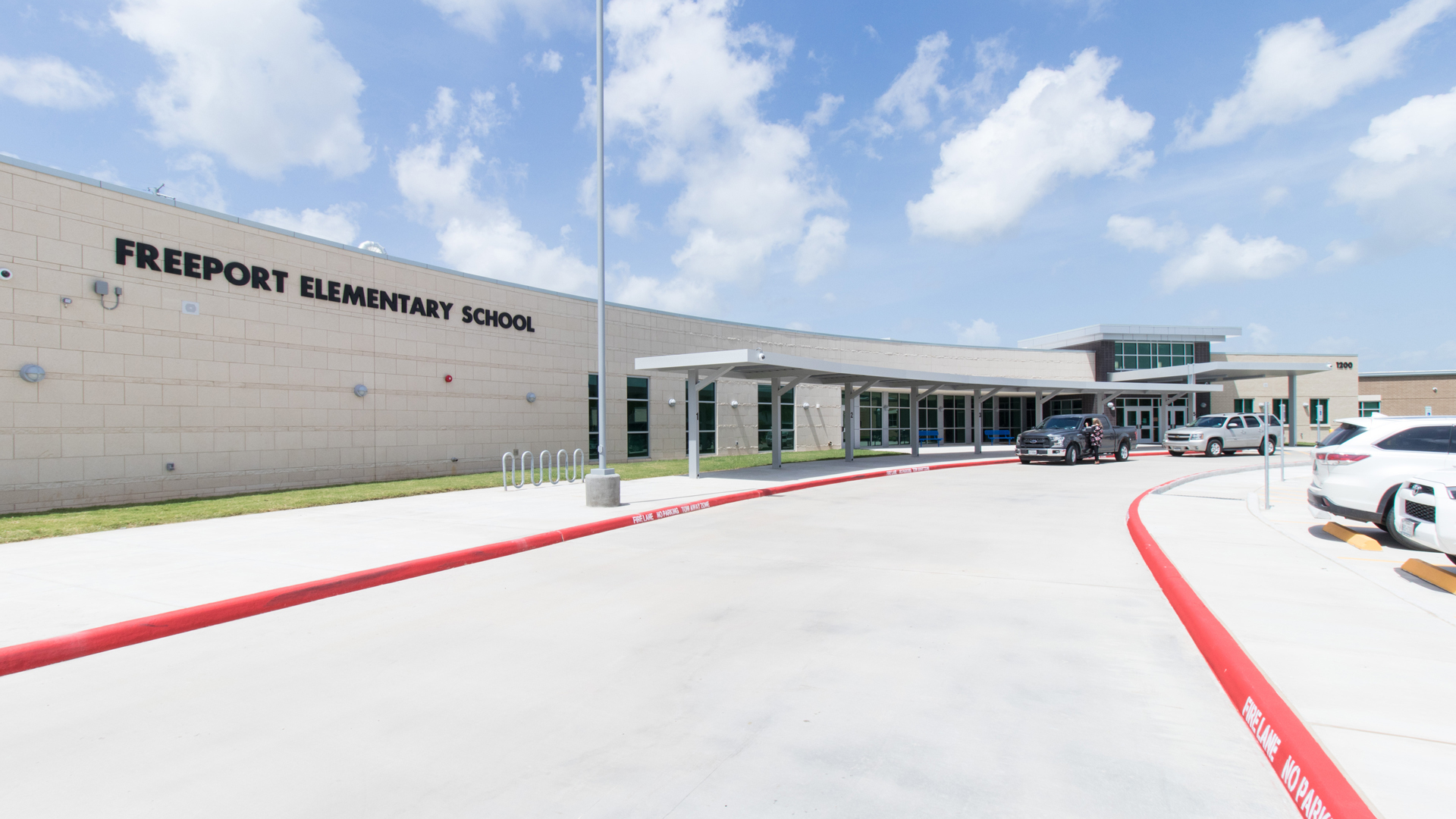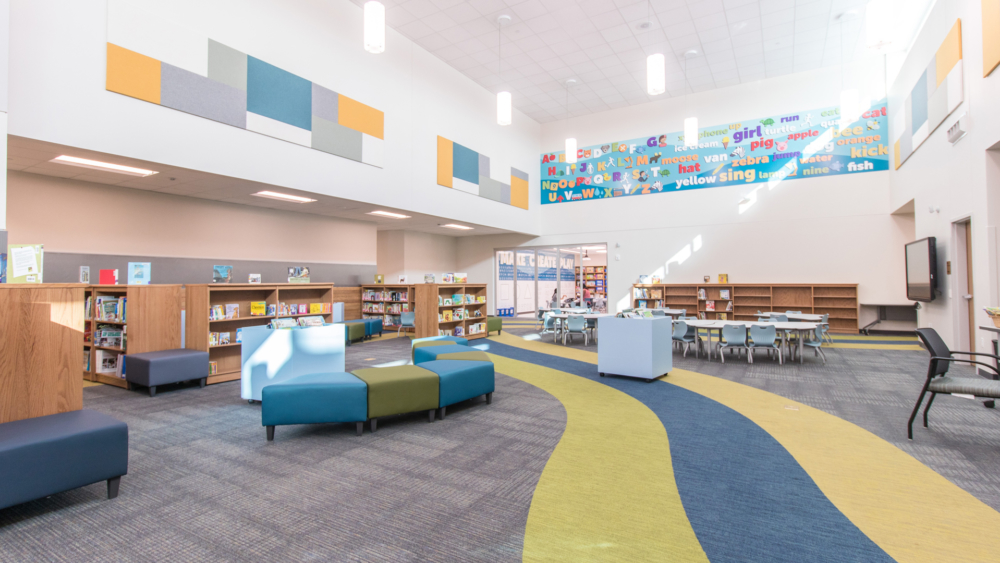
The Rise of Modern Scandinavian Design in Education
Over the last several years, there has been a resurgence of Modern Scandinavian design in America. Modern Scandinavian design is defined by its simple, minimalistic aesthetic with a focus on functionality. The combination of light colors and clean lines creates a comforting environment, appealing to the fast paced, high stress lifestyle of many Americans.
Scandinavian schools typically have a simplistic design with light neutral colors, wood tones, and pops of bright accents. The schools are designed to allow an abundance of natural light and provide views to the outside in order to capture the culture and landscape of the surrounding area. Use of varying visual and tactile textures is common in Modern Scandinavian Design. These attributes served as the main source of design inspiration for the brand new Freeport Elementary in Brazosport ISD. As contradictory as it might sound, this early learning campus, located off of the coast of the Gulf of Mexico, provided a perfect setting for the Scandinavian design model to be displayed.
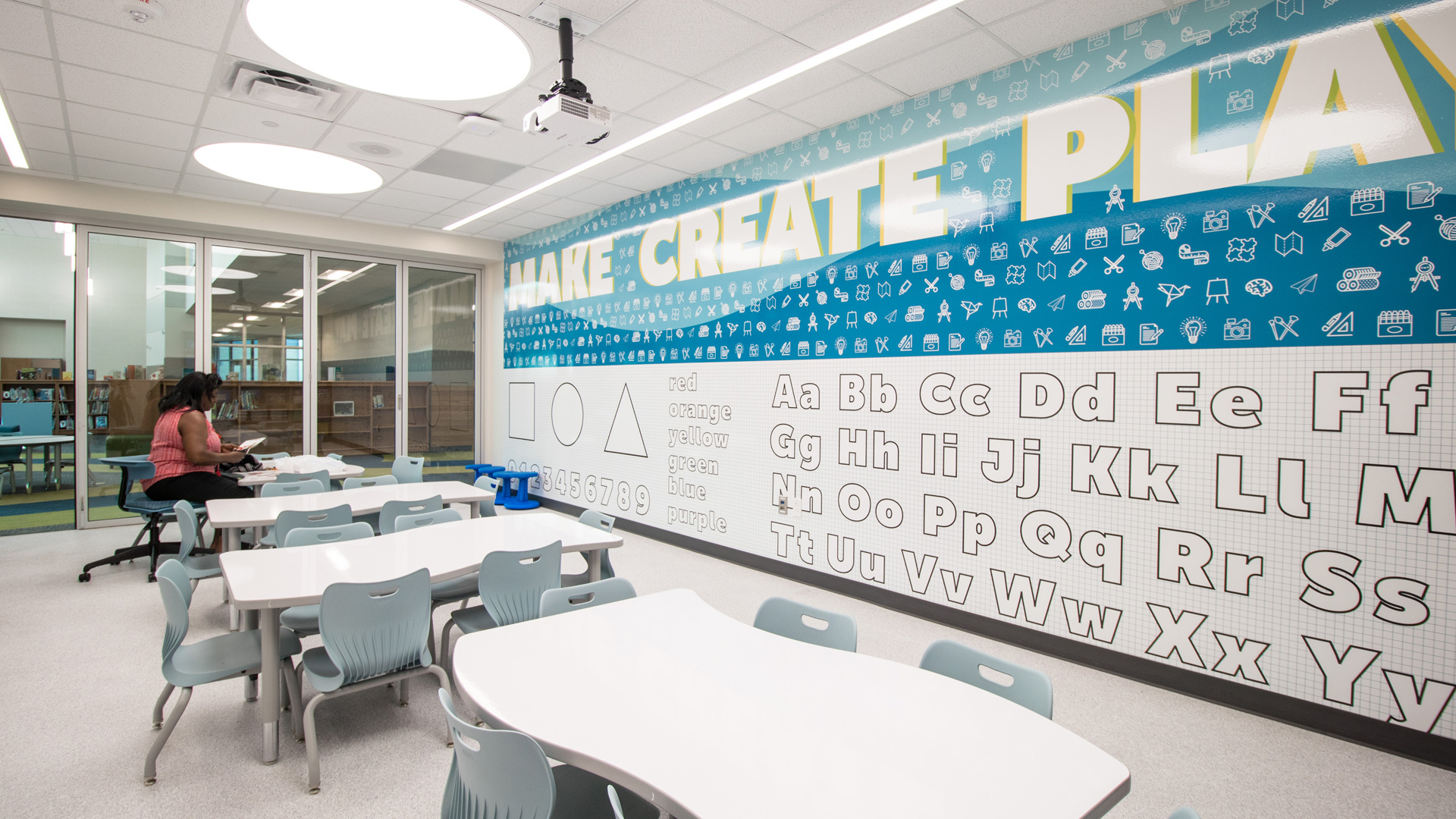
The school’s color scheme incorporates warm, yet crisp, white with accents of bright blue, lime green, and lemony yellow, and ample natural light as seen in most Modern Scandinavian designs. The warm white provides a great contrast for the bright colors to pop and provide the eye plenty of resting space while the blue and green tones help to create a calming environment. The yellow adds just a touch of excitement to keep the space youthful.
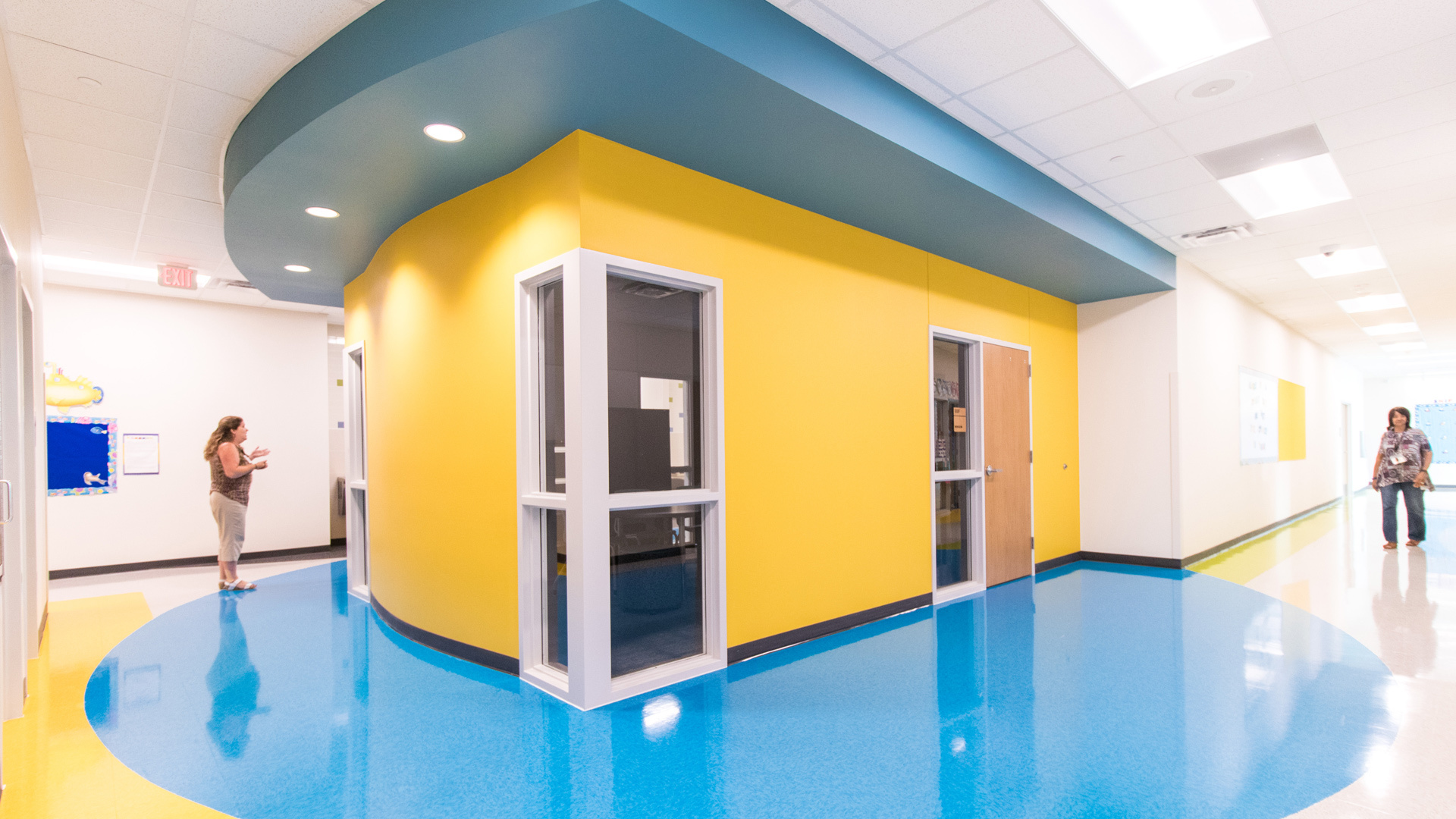
Utilizing neutral colors in a learning environment with a mix of calming and mildly exciting color tones is important when designing for children. Overuse of harsh and bright colors in a space can overwhelm and distract, a concept explained in Archinect’s article Color in Architecture – More Than Just Decoration. A visually calm yet inviting environment can help ease anxiety, generate focus or even get children excited about attending school. Using a neutral color scheme with pops of cool, bright colors creates an exciting learning environment suitable for students of all learning styles and needs.
In addition to the strategic color palate, various textures were used in this new design. Wave textured tiles, wood planking, and brick walls can be seen from the media center, as well as the front entry of the school. Around the corner is a tile feature wall made up of large format hexagon tiles in a neutral tone gradient pattern. Using various textures throughout the space is not only visually interesting but also serves as a learning tool for many children. While every child learns differently, tactile learning is a leading learning preference for Generation Alpha. This learning style can help children with not only motor cognitive and language skills, but also with social skills and emotional development.
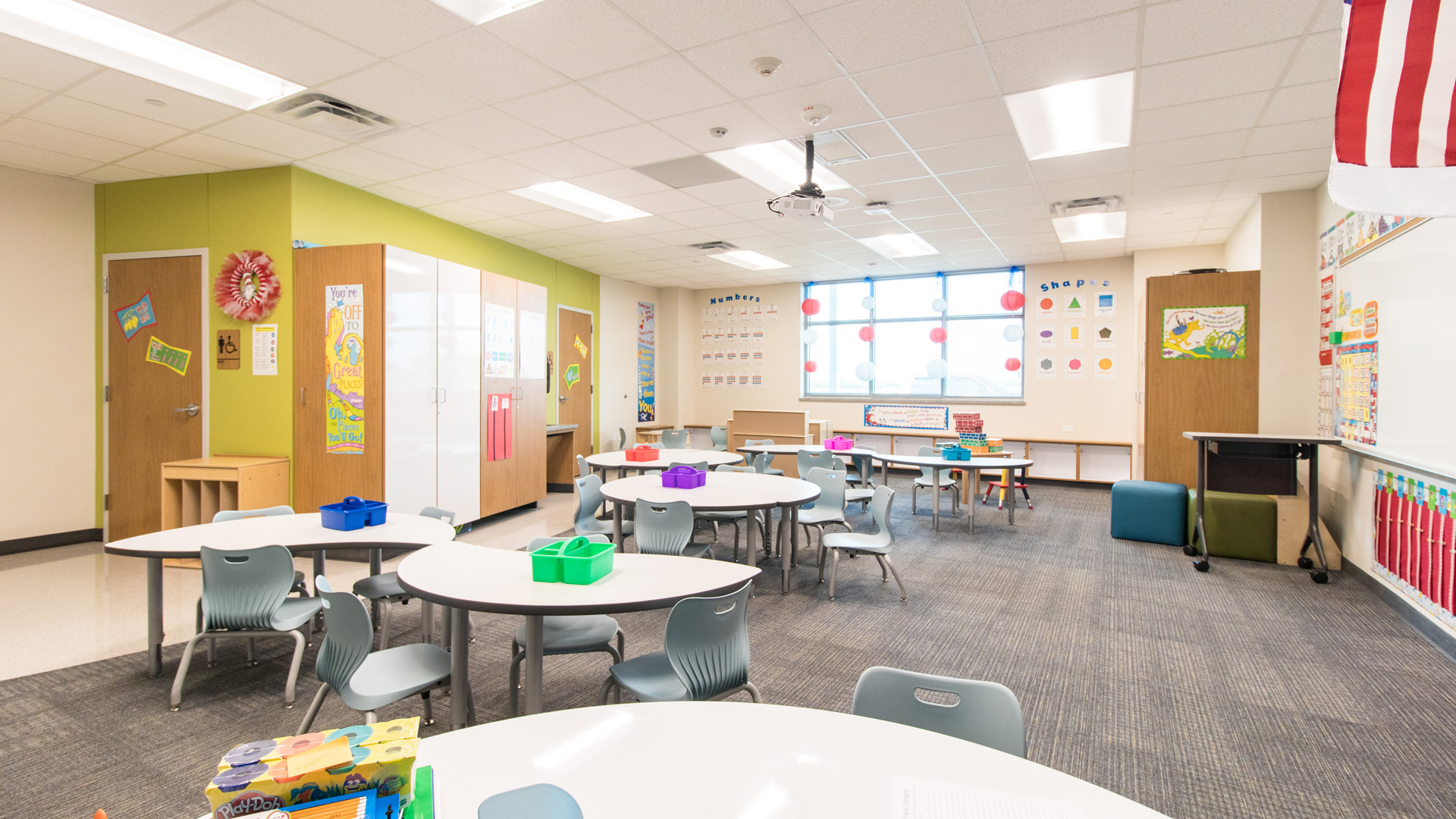
Freeport Elementary shows that it is proud of being on the gulf coast by reflecting the area’s surrounding culture and landscape in its design. The front façade has a curved wall reminiscent of the shape of a large ship. The exterior glass is tinted a light green to remind us of the water nearby. Touches of gentle waves can be found throughout the interior of the school including the media room carpeting and the wet lab accent tiles. Finally, two statement walls can be seen in the heart of the building, designed after a classic sail boat with wood planks on the bottom and cream sections above. Freeport Elementary officially opened this fall and is truly a one-of-a-kind school, not only in aesthetic, but also in the quality of the overall learning environment.
